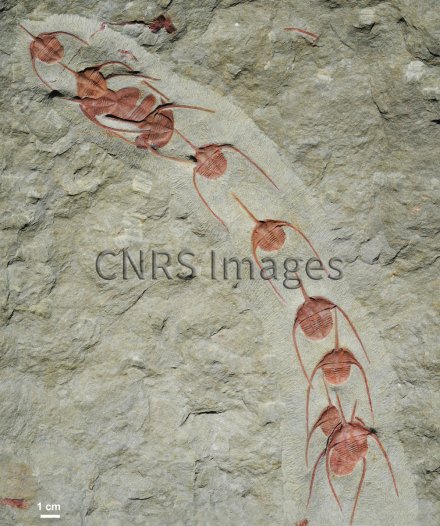Production year
2019

© Jean VANNIER / LGL-TPE / CNRS Images
20200006_0001
Assemblage linéaire d'"Ampyx priscus" un fossile de l'Ordovicien inférieur (entre - 485 et - 477 millions d'années), découvert dans les schistes des Fezouata, au Maroc. Cette image est en lien avec des travaux sur les comportements collectifs des premiers animaux. Cet exemple indiquerait que le comportement collectif a une origine très ancienne et qu’il a sans doute représenté très tôt, chez les premiers animaux, un avantage évolutif permettant d’échapper au stress environnemental et d’augmenter ses chances de reproduction.
The use of media visible on the CNRS Images Platform can be granted on request. Any reproduction or representation is forbidden without prior authorization from CNRS Images (except for resources under Creative Commons license).
No modification of an image may be made without the prior consent of CNRS Images.
No use of an image for advertising purposes or distribution to a third party may be made without the prior agreement of CNRS Images.
For more information, please consult our general conditions
2019
Our work is guided by the way scientists question the world around them and we translate their research into images to help people to understand the world better and to awaken their curiosity and wonderment.